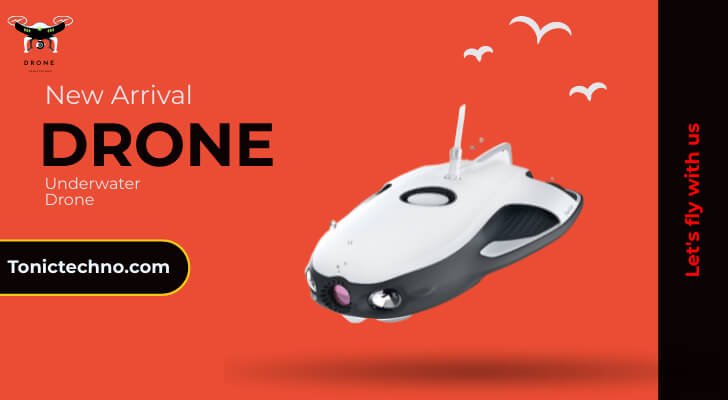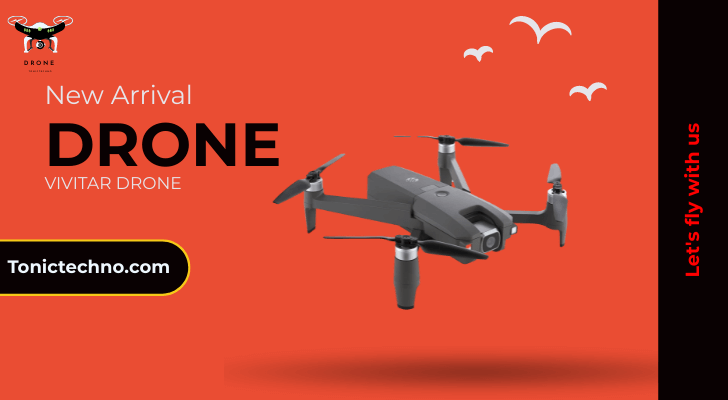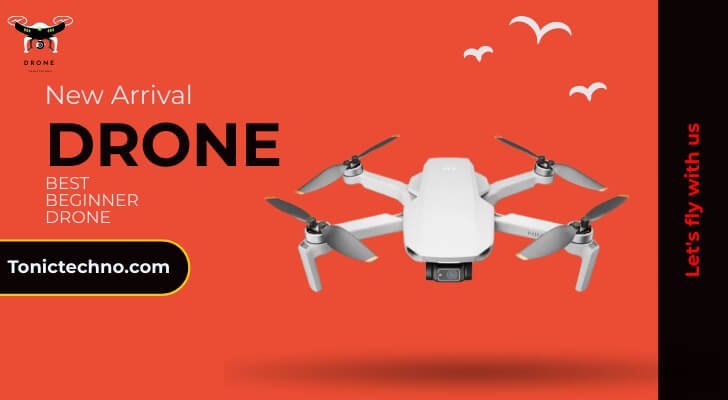Have you ever wondered what lies beneath the surface of the water? I did, too, until I could use an underwater drone. It was like diving into a new world without getting wet! With a simple remote control, I explored vibrant coral reefs, encountered curious fish, and captured stunning footage. The easy use and high-quality camera made everything accessible, even for a beginner like me. Whether you’re into underwater photography or marine life or want to experience the ocean like never before, an underwater drone is a game-changer.

What Are Underwater Drones?
This drones are uncrewed, remote-controlled vehicles designed to operate below the water’s surface. Often called remotely operated vehicles (ROVs) or autonomous underwater vehicles (AUVs), they are used for various applications, such as underwater exploration, research, filming, and fishing. These drones have cameras, lights, and sensors to help you capture images and videos in clear or murky waters. Their compact design makes them easy to deploy and manoeuvre in various environments, from shallow ponds to deep ocean waters.
How Do Underwater Drones Work?
This drones function similarly to drones used in the air but are specially built to handle the challenges of underwater environments. They are typically powered by rechargeable batteries and are controlled using a remote or mobile app. Most underwater drones use a tethered system, meaning a cable connects the drone to the operator on the surface. This cable helps to transfer power, video footage, and control signals. However, some drones are fully autonomous and don’t require a tether; they rely on pre-programmed instructions to navigate.
Key components include
- Cameras: Used for capturing high-definition video and photos.
- Thrusters: These provide propulsion to help the drone move through the water.
- Sensors: These measure depth, temperature, and other underwater conditions.
- Battery: Powers the drone for hours of underwater operation.
Read More: Mastering the Skies: Best Beginner Drone
Top Uses of Underwater Drones
This drones are used for various purposes across different industries. Let’s take a look at some of their top uses:
- Marine Research and Exploration: Scientists and researchers often use this drones to explore the ocean depths and study marine life. Drones can go to places otherwise dangerous or inaccessible for divers, such as deep-sea environments. Researchers use these drones to study coral reefs, monitor the health of ocean ecosystems, and document marine life in its natural habitat.
- Underwater Photography and Videography: One of the most popular uses for this drones is capturing stunning underwater footage. Whether you are a professional filmmaker or a hobbyist, these drones allow you to film wildlife, shipwrecks, and underwater landscapes in high definition. Their ability to reach depths that divers cannot quickly access makes them invaluable tools for videographers.
- Environmental Monitoring: This drones also monitor and protect marine ecosystems. They help assess the health of coral reefs, detect pollution, and monitor ocean currents. They are also used to study the effects of climate change on marine environments.
- Fishing and Recreational Uses: Some fishermen use underwater drones to find fish, assess water quality, and even drop bait in hard-to-reach locations. Recreational enthusiasts also use these drones for fun, exploring underwater caves and shipwrecks or simply enjoying the view beneath the water’s surface.
Best Underwater Drones for Diving and Exploration
Choosing the best underwater drone depends on your specific needs. If you’re a diver or someone exploring the ocean, you want a drone with a good camera, reliable battery life, and excellent manoeuvrability. Here are a few models that stand out:
- PowerVision PowerRay: The PowerRay is one of the most popular underwater drones for recreational divers. It offers 4K UHD video capture, 100-meter depth capability, and a long-lasting battery. The PowerRay also has an intuitive app, making it easy to control.
- Blueye Pioneer: The Blueye Pioneer is a professional-grade ROV designed for shallow and deep-water exploration. It has a 12-hour battery life and a 150-meter depth rating, making it perfect for serious divers and researchers.
- Gladius Mini: The Gladius Mini is a lightweight, compact drone with excellent functionality. It can dive to depths of 100 meters and has a 4K camera. The Gladius Mini is known for its impressive stability, even in strong currents.
Read More: Drone Fishing: How This Powerful Tool Revolutionizes Your Fishing Game
Benefits of Using an Underwater Drone
Using an underwater drone has many benefits, especially compared to traditional methods of underwater exploration, such as scuba diving. Some of the advantages include:
- Cost-Effective: Buying an underwater drone can be more affordable than hiring a professional diver or using expensive equipment for underwater research.
- Safety: With an underwater drone, divers do not need divers to risk their safety by going to dangerous depths. Drones can reach places that would otherwise be off-limits to humans.
- Capturing High-Quality Footage: Underwater drones have high-resolution cameras, making capturing clear, sharp images and videos underwater easier. This is especially useful for researchers and videographers.
- Accessibility: Unlike traditional diving, which requires certifications and physical preparation, an underwater drone can be operated by anyone with minimal training, making it accessible to all.
Factors to Consider When Buying an Underwater Drone
Several factors should be considered when purchasing an underwater drone to ensure you choose the best model for your needs.
- Depth Rating: Different drones can reach varying depths. If you plan to explore deep-sea environments, choose a drone with a high-depth rating.
- Camera Quality: Consider the camera specifications if you’re interested in capturing video or images. Look for a drone with at least 4K video capabilities and good low-light performance.
- Battery Life: A longer battery life is crucial, especially for deep-sea explorations. Look for drones with a battery life of at least 3-4 hours.
- Size and Portability: Smaller drones are easier to carry and deploy but may sacrifice some advanced features. Larger drones offer more power and depth capability but can be bulkier.
- Price: Prices vary greatly depending on features. Determine your budget and what features are most important to you before purchasing.
Tips for Using an Underwater Drone Safely
Using an underwater drone is relatively easy, but safety precautions are essential to ensure your and the drone’s safety.
- Pre-Checks: Before using your underwater drone, ensure it’s fully charged, all parts are secure, and there are no signs of damage. Double-check that the camera lens is clean for clear footage.
- Monitor Battery Life: Always check the battery level. If the drone is tethered, ensure the tether is securely attached to both the drone and the surface operator.
- Avoid Strong Currents: Strong underwater currents can make controlling your drone difficult. Always check the weather conditions and sea currents before venturing out.
- Maintenance: To prevent corrosion, regularly clean your drone, especially after use in saltwater. When not in use, store it in a dry, safe place.
Read More: My Amazing Experience with Le Drone A Journey to the Skies
Troubleshooting Common Issues with Underwater Drones
Like any technology, underwater drones can sometimes encounter issues. Here are a few common problems and how to solve them:
- Connectivity Problems: Check the signal connection if your drone is not responding to commands. In some cases, interference from nearby objects can disrupt communication.
- Camera Malfunction: If your drone’s camera isn’t working correctly, ensure the lens is clean, check the settings in the app, and verify that the camera is powered on.
- Battery Issues: Short battery life or rapid draining can be caused by overuse or temperature changes. Always charge the drone fully before use and avoid long exposures to extreme conditions.
Future of Underwater Drones: What’s Next?
This drone technology is still evolving. We may see drones with longer battery life, deeper depth capabilities, and even better image resolution. AI integration could also make drones more autonomous, allowing them to make decisions and navigate complex underwater environments without human input.
FAQ
What is an underwater drone?
An underwater drone is a remote-controlled vehicle designed to explore beneath the surface. It is often equipped with cameras and sensors.
How deep can an underwater drone go?
The depth capacity varies by model, but most underwater drones can reach depths between 100 to 150 meters.
Do I need to be a professional to use an underwater drone?
No, underwater drones are user-friendly and can be operated by beginners with minimal experience.
Can underwater drones be used for fishing?
They are popular among fishermen for locating fish and checking water quality.
How long can an underwater drone last on a single charge?
Depending on the model, most underwater drones can last 2 to 4 hours on a single charge.
Conclusion
Underwater drones offer a unique opportunity to explore the ocean’s depths without getting wet. Whether you’re a hobbyist or a professional, these drones provide a safe, easy, and exciting way to capture high-quality underwater footage, monitor marine life, or enjoy the wonders of the deep sea. With various models available, you can find one that suits your needs, whether for casual use or professional research. If you’re curious about underwater exploration, an underwater drone might be your perfect companion to dive into the unknown.


